- Home
- Crop Knowledge
- Vegetables
- Cruciferous
Cruciferous
- Nutrients
- Common Pests
- Crop Selection
- Documents
|
Crop Stage Images |
 |
 |
 |
|
|---|---|---|---|---|
| Crop Stage | Transplanting to plant establishment | Curd Initiation Stage | Curd Development Stage | |
| Duration (in days) |
10 | 25 | 35 | |
|
Nutrients (Kg/ha) |
N | 19.913 | 112.073 | 68.080 |
| P | 11.906 | 19.113 | – | |
| K | 15.206 | 50.100 | 60.333 | |
Deficiency of Nutrients:
| Nutrients | Nitrogen (N) | Phosphorus (P) | Potassium (K) | Calcium (Ca) | Magnesium (Mg) |
|---|---|---|---|---|---|
| Nutrients Deficiency |  |
 |
 |
 |
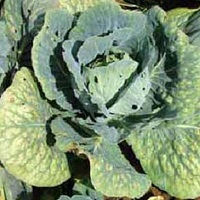 |
| Deficiency Symptoms | 1. Stunted plant growth.
2. Yellowing of old leaves. |
1. Pigmentation in old leaves.
2. Curd size and quality will be affected. |
1. Leaf tips turn brown, leaves turn inward and can have a crinkled surface. | 1. Leaf growth will be inhibited.
2. Scorching symptoms occur in new leaves. |
1. Leaves become small.
2. Yellowing symptoms occur in old leaves. |
| Nutrients | Sulphur (S) | Boron (B) | Copper (Cu) | Molybdenum(Mo) | Zinc (Zn) | Iron (Fe) |
|---|---|---|---|---|---|---|
| Nutrients Deficiency |  |
 |
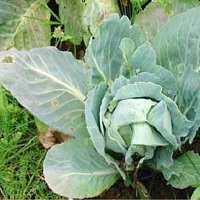 |
 |
 |
 |
| Deficiency Symptoms | 1. Youngest leaves turned purplish, cupped upward leaf edges rolled in. | 1. Apical growing points stop developing leaves thick brittle and irregular chlorosis. | 1. Symptoms occur in young leaves.
2. Curd size also affected. 3. Leaf growth will be affected. |
1. Stunted plant growth with malformed leaves. | 1. The occurrence of little leaf symptoms; curd size will be small; chlorosis occurs in young leaves. | 1. Stunted plant growth.
2. Chlorosis occurs in young leaves. 3. Leaves become smaller in size. |
|
Crop Stage Images |
 |
 |
 |
|
|---|---|---|---|---|
| Crop Stage | Transplanting to plant establishment | Curd Initiation Stage | Curd Development Stage | |
| Duration (in days) |
10 | 25 | 35 | |
|
Nutrients (Kg/ha) |
N | 19.913 | 112.073 | 68.080 |
| P | 11.906 | 19.113 | – | |
| K | 15.206 | 50.100 | 60.333 | |
Deficiency of Nutrients:
| Nutrients | Nitrogen (N) | Phosphorus (P) | Potassium (K) | Calcium (Ca) | Magnesium (Mg) |
|---|---|---|---|---|---|
| Nutrients Deficiency | 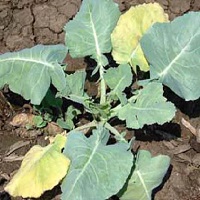 |
 |
 |
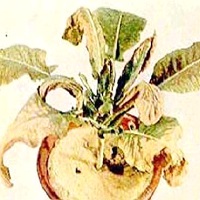 |
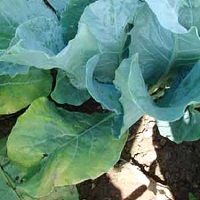 |
| Deficiency Symptoms | 1. Plants have a uniform yellowish colour, with leaves closest to the roots the root system very large oldest leaves will show purpling on underside first and margins of leaves tips will then turn purple.
2. Followed by the whole leaf taking on this colour growth is retarded and plants have a poor root system. |
1. Stunted plant growth.
2. Pink colour pigmentation seen in old leaves. |
1. Appears first on oldest cabbage leaves as spots shiny green leaves turn dull green, leaf margins turn a yellowish green followed by withering mature heads are loose and smaller.
2. Leaf tips turn brown, leaves turn inward and can have a crinkled surface. |
1. Symptoms appear first in youngest plant parts.
2. Tip burn with chlorotic young leaves. 3. Severe cases breakdown of the heart and dieback of rootlets. |
1. Oldest leaves are affected first interveinal chlorosis with green veins leaf margins stay green at first, but ultimately dry up on cauliflower small chlorotic leaflets.
2. Poor rooting Magnesium deficiency should not be confused with virus infection. |
| Nutrients | Sulphur (S) | Boron (B) | Copper (Cu) | Manganese (Mn) | Zinc (Zn) | Molybdenum (Mo) |
|---|---|---|---|---|---|---|
| Nutrients Deficiency |  |
 |
 |
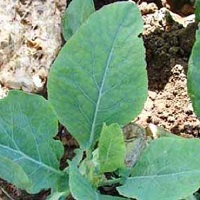 |
 |
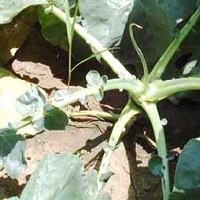 |
| Deficiency Symptoms |
1. Youngest leaves turned purplish, cupped upward leaf edges rolled in. |
1. Symptoms occur first in the youngest parts.
2. Youngest leaves turn chlorotic and their tips turn brown later on. 3. The youngest leaves are chlorotic, leaf edges are scorched and blades turn downward develop poorly. |
1. Youngest leaves become chlorotic.
2. Growth is stunted and heads are poorly formed. 3. The plant gives a wilted appearance. |
1. Poor growth interveinal chlorosis with dark green main veins of youngest leaves chlorosis extends into the leaf margins.
2. In severe cases, the whole leaf turns yellowish. |
1. Young leaves become small.
2. Curd colour will be affected. |
1. Poor curd development.
2. New leaves become irregular. 3. Cupping of the leaves and interveinal chlorosis followed by twisting and narrow elongation of leaves. |
| Images Of Pest Life Cycle: |  |
 |
 |
 |
|---|---|---|---|---|
| Stages: | Egg | Larvae | Pupae | Adult |
| Mark Of Identification: | Spherical in shape and creamy white in colour, laid singly. | Shows colour variation from greenish to brown. Green with dark brown-grey lines laterally on the body. | Brown in colour, occurs in soil, leaf, cabbage crop debris. | Light pale brownish yellow stout moth. Fore wing grey to pale brown with V-shaped speck. |
| Life Cycle: | 2-4 Days. | 3-6 Days. | 6-10 Days. | 14 Days. |
Management (Pest Control):
| Chemical: | Apply Diazinon or Lambda-cyhalothrin, this will provide a rapid kill of the pest, but there is a need to be repeated if the pest returns. |
|---|---|
| Organic: | Spray G Agro Microfeed L 5gm/lit 2 to 3 spray at 21 days interval. |
| Images Of Pest Life Cycle: |  |
 |
 |
 |
|---|---|---|---|---|
| Stages: | Egg | Larvae | Pupae | Adult |
| Mark Of Identification: | Diamondback moth eggs are oval and flattened. Eggs are yellow or pale green in colour. | Larvae are colourless in the first instar, but thereafter are green. The body bears relatively few hairs. | Pupation occurs in a loose silk cocoon, usually formed on the lower or outer leaves. | The adult is a small, slender, greyish-brown moth with pronounced antennae. |
| Life Cycle: | 5-6 Days | 2-10 Days. | 5-15 Days. | 12-16 Days. |
Management (Pest Control):
| Chemical: | Spray 0.05% Malathion or Quinalphos @ 3ml/lit of water. Spray Bt @ 1-1.5 Kg/ha. |
|---|---|
| Organic: | Spray G Agro Beau 5gm/lit + G Agro Meta 5ml/lit 2 to 3 spray at 21 days interval. |
| Images Of Pest Life Cycle: |  |
 |
 |
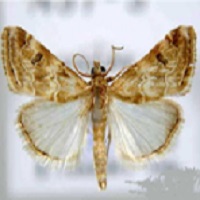 |
|---|---|---|---|---|
| Stages: | Egg | Larvae | Pupae | Adult |
| Mark Of Identification: | White and Light Yellowish in Color | The mature larva is about 1.5 inches in length. The larva is covered with very small black spines. | A tough cocoon protects the dark reddish-brown pupa. | The adult moth is usually fawn-coloured and has a wing expanse of about 2 inches. |
| Life Cycle: | 5-6 Days. | 12-15 Days. | 12-20 Days. | 30-60 Days. |
Management (Pest Control):
| Chemical: | For control of grown up larvae apply 5% malathion dust @ 37.5 kg/ha. Spray 250 ml of endosulfan 35EC in 150 litres of the water per ha. |
|---|---|
| Organic: | Spray G Agro Beau 5gm/lit + G Agro Meta 5ml/lit 2 to 3 spray at 21 days interval. |
| Images Of Pest Life Cycle: | 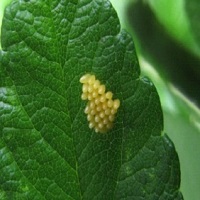 |
 |
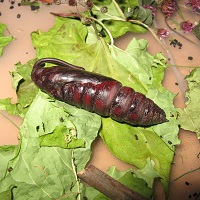 |
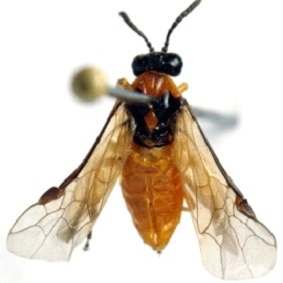 |
|---|---|---|---|---|
| Stages: | Egg | Larvae | Pupae | Adult |
| Mark Of Identification: | Eggs are very small and creamy white . 30-35 eggs along the underside of the leaf margins. | Larvae are slender, whitish grubs nearly covered by very fine. | Typical Tabanidae pupa black in colour. | The adult is a predominantly yellow fly, The forelegs are predominantly black, the other pairs yellow. |
| Life Cycle: | 5-12 Days. | 15 Days. | 20 Days. | 30-50 Days. |
Management (Pest Control):
| Chemical: | Spray the crop with malathion 50 EC @ 1000 ml / ha quinolphos 25 EC @ 625ml / ha. All this should be applied in about 600 to 700 litres of water per ha. |
|---|---|
| Organic: | Spray G Agro Beau 5gm/lit + G Agro Meta 5ml/lit 2 to 3 spray at 21 days interval. |
| Images Of Pest Life Cycle: |  |
 |
 |
 |
|---|---|---|---|---|
| Stages: | Egg | Larvae | Pupae | Adult |
| Mark Of Identification: | Eggs are laid on the upper and lower surface of the leaves. | The larvae appear dark brown. | Pupal cases are formed using mucus produced in the maxillary glands. | The adult is black and sunlight sparkly colour. |
| Life Cycle: | 1-15 Days. | 5-8 Days. | 15-20 Days. | 20-25 Days. |
Management (Pest Control):
| Chemical: | Dusting of 10 % Carbaryl @ 20 Kg/ha. Spray 0.03 % Dimethoate @ 1.5 ml/lit. |
|---|---|
| Organic: | Spray G Agro Beau 5gm/lit 2 to 3 spray at 21 days interval. |
| Images Of Pest Life Cycle: |  |
 |
 |
 |
|---|---|---|---|---|
| Stages: | Egg | Larvae | Pupae | Adult |
| Mark Of Identification: | Egg masses appear green white color. | Pale greenish with dark marking. Gregarious in the early stages. | Dark Brownish in colour. | Forewings are brown in colour with wavy white marking, Hind wings are white in colour with a brown patch along the margin. |
| Life Cycle: | 3-5 Days. | 1-10 Days. | 7 Days. | 19-23 Days. |
Management (Pest Control):
| Chemical: | Spray tobacco decoction i.e. 250 g tobacco+ 30 g liquid soap+4 litre of water boiled for 30 minutes and diluted @ 1:4 parts of water. |
|---|---|
| Organic: | Spray G Agro Beau 5gm/lit + G Agro Meta 5ml/lit 2 to 3 spray at 21 days interval. |
| Images Of Pest Life Cycle: |  |
 |
 |
 |
|---|---|---|---|---|
| Stages: | Egg | Larvae | Pupae | Adult |
| Mark Of Identification: | White in color. | Are small in size and green in colour. | Greenish in colour. | The adult male and female butterflies are snow white; males generally are smaller than females. |
| Life Cycle: | 3-18 Days. | 15-40 Days. | 7-29 Days. | 3-20 Days. |
Management (Pest Control):
| Chemical: | Dusting of 10 % Carbaryl @ 20 Kg/ha. Spray 0.03 % Dimethoate @ 1.5 ml/lit. |
|---|---|
| Organic: | Spray G Agro Beau 5gm/lit + G Agro Meta 5ml/lit 2 to 3 spray at 21 days interval. |
| Images Of Pest Life Cycle: |  |
 |
 |
 |
|---|---|---|---|---|
| Stages: | Egg | Pupae | Nymphs | Adult |
| Mark Of Identification: | The eggs gradually turn from white to orange and are oval shaped. | Cylindrical blackish dark black spotted colour. | Nymphs are bright brown in colour. | They are black with a number of brown spot in body They are sub-ovate, black and have a number of orange or brow. |
| Life Cycle: | 5-8 Days. | 10-15 Days. | 10-15 Days. | 2-3 Weeks. |
Management (Pest Control):
| Chemical: | Spray dimethoate 30 EC @ 1 lit / ha or methyl demeton 25 EC @ 1lit /ha. |
|---|---|
| Organic: | Spray G Agro Beau 5gm/lit 2 to 3 spray at 21 days interval. |
| Seed Variety | Characteristics | Crop Duration (Days) |
Crop Yield (t/ha) |
|---|---|---|---|
| Golden Acre | 1. Early growing variety with small round heads, the colour of the leaves is light green from outside and dark green from inside. 2. Individual head weighing 1-1.5 kg. |
60-65 | 20-24 |
| Pride of India | Early growing variety medium-large head weighing 1-1.5 kg. | 70-80 | 20-28 |
| Copenhagen Market | 1. Late maturing variety, a popular variety in West Bengal. 2. Head is large in size weighing 2.5-3 kg each. |
75- 80 | 24 |
| Pusa Mukta | 1. Heads flattish round, medium sized with light green outer leaves, weighing 1.5-2 kg each. 2. Tolerant to black rot disease. |
80-90 | 25-30 |
| Pusa Synthetic | Heads are medium in size, high yielding variety. | 80-90 | 35-46 |
| September Early | 1. Midseason variety popular in the Nilgiris, a head is compact, flat-oblong with bluish green foliage, weighing 4-6 kg. 2. It is susceptible to black rot disease. 3. This variety can be kept in the field after they are ready for harvest and do not show cracking. |
105-110 | 40-50 |
| Pusa Drumhead | 1. Late season variety. 2. The heads are large, flat, somewhat loose and drum shaped. Each head weighs 3-5 kg. 3. Outer leaves are light green with prominent mid-rib. 4. Requires long winter for a good crop, tolerant to blackleg disease. |
90-120 | 50-54 |
| Early Drum Head | Early maturing variety with heads flat, medium-large, weighing 2-3kg. | 60-70 | 20-30 |
| Late Large Drum Head | Late maturing variety with heads compact, flat and equal in size. | 100-105 | 20-30 |
| K-1 | Heads are large sized with inner leaves white in colour, tolerant to black rot disease. | 115 | 20-30 |
| Seed Variety | Characteristics | Crop Duration (Days) |
Crop Yield (t/ha) |
|---|---|---|---|
| Pusa Deepali | 1. Early maturing variety, curds compact, self-blanching, white, medium-sized and almost free from riceyness. 2. Curds ready for harvest in late October. |
95 | 12 |
| Early Kunwari | 1. Very early variety. Curds hemispherical with even surface. 2. Ready for harvesting from mid-September to mid-October. |
95 | 8 |
| Punjab Giant-26 | 1. Main season variety. Curds solid, white, medium-sized. 2. Ready for harvesting from mid-November to December. |
110-120 | 17 |
| Punjab Giant-35 | 1. Main season variety. The curd is white, compact medium-sized. 2. Ready for harvesting from mid-November to December. |
110-120 | 17 |
| Pant Shubhra | 1. Early growing variety. Curds are compact, slightly conical and creamy white. 2. Ready for harvest in November. |
120 | 20 |
| Pusa Snowball-1 | 1. Late maturing variety. Curds very compact, medium in size and snow white in colour. 2. Ready for harvesting from January to April. Susceptible to black rot. |
100 | 25-30 |
| Snowball-16 | 1. Late maturing variety. Curds medium sized, solid, having an attractive white colour. 2. Ready for harvesting from January to March. |
100-125 | 25-30 |
| Pusa Early Synthetic | 1. Main season variety. Curds somewhat creamy white to white and compact. 2. Ready for harvest from mid-December to mid-January. |
95 | 11 |
| Pant Gobhi-2 | 1. Early maturing variety. Curds compact, composite and creamy white. 2. Curds ready for harvesting from November to December. |
95 | 12 |
| Pant Gobhi-3 | 1. Early maturing variety. Curds medium-sized and solid white. 2. Curds ready for harvest from October. |
95 | 10 |
| Dania Kalimpong | 1. Late season variety. Curds are medium-large, compact, attractive and white. 2. Less sensitive to fluctuations of the environment. 3. Ready for harvesting from January to April. |
100-110 | 25-30 |

